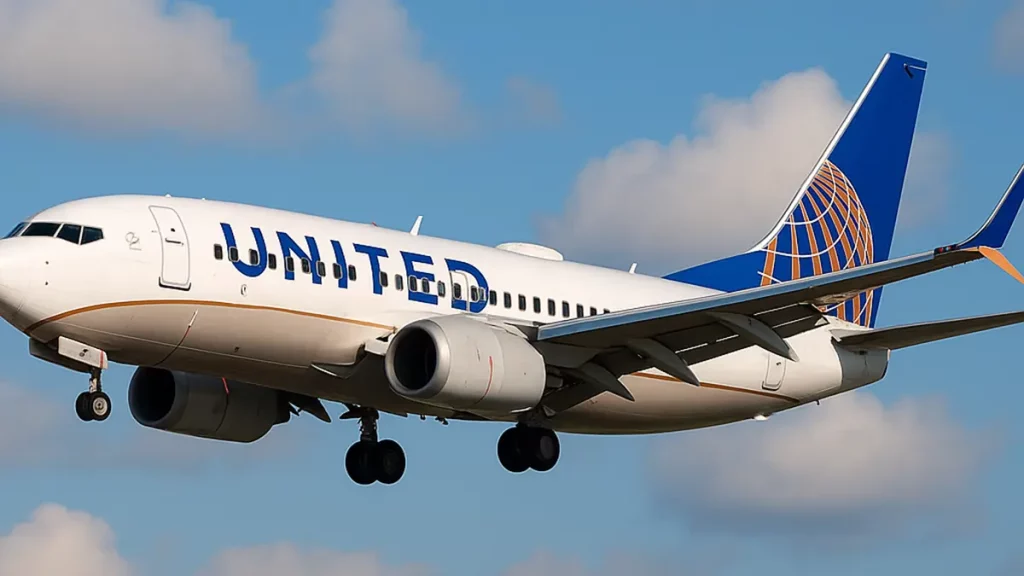
On July 28, 2025, United Airlines Flight UA770, operating the San Francisco (SFO) to Chicago O’Hare (ORD) route, experienced a flight diversion due to a suspected mechanical issue. Roughly 90 minutes into cruising altitude, the flight crew detected an abnormal warning later identified as a hydraulic system alert and declared an aircraft emergency, diverting the aircraft to Denver International Airport (DEN). The diversion was carried out smoothly, with no injuries reported, exemplifying modern aviation safety protocols in action.
The Timeline of Events
- Takeoff and Climb
UA770 departed SFO at approximately 07:30 AM local time, climbing toward its cruising altitude. - Warning Alert (~90 minutes in)
The cockpit’s EICAS (Engine-Indicating and Crew-Alerting System) flagged an anomaly in the hydraulic system—critical for flight controls and landing gear. - Declaration and Coordination
Following Standard Operating Procedures (SOPs), the captain declared an emergency rather than risk continued flight. The flight crew communicated with ATC and coordinated a diversion plan with both United’s operations center and Denver ATC. - Descent and Diversion
The aircraft initiated a controlled descent toward DEN, with cabin crew preparing passengers for an emergency divert landing. - Safe Landing in Denver
UA770 touched down safely at Denver International. Emergency services were on standby but stood down, confirming a routine diversion. - Post-Landing Procedures
Upon arrival, maintenance crews conducted thorough hydraulic system checks. Passengers were assisted with rebooking, meals, and accommodations as needed.
Understanding the Emergency
The hydraulic system oversees essential flight surfaces, landing gear deployment, and braking. A warning even absent an outright failure demands immediate attention, as hydraulic anomalies can escalate rapidly. Rather than continue to ORD, the captain prioritized safety and diverted to the nearest suitable airport, consistent with FAA guidance and airline SOPs.
The Crew’s Response: A Testament to Training
- Pilot and First Officer: Demonstrated strong aviation safety judgment by declaring an emergency promptly and working closely with ATC and airline ops. Their use of EICAS data and systems knowledge under pressure reflects high expertise.
- Cabin Crew: Provided calm, clear communication to passengers adjusting seatbelts, reassuring anxious travelers, and preparing the cabin for the diverted landing, showing professionalism rooted in rigorous in‑flight emergency training.
- Unified Response: Coordination between flight deck, cabin crew, operations, and ATC underscores a high level of preparedness that stems from repeated scenario-based simulations and regulatory compliance under FAA rules.
What Happens When a Flight Diverts?
Here’s a general breakdown of flight diversion protocols valuable for both passengers and aviation enthusiasts:
- Assessment & Decision: Crew assesses the severity of the situation (using systems like EICAS, checklists, manual SOPs).
- Communication: Captain notifies ATC with MAYDAY (life-threatening) or PAN‑PAN (less severe but urgent) as appropriate; UA770 used a formal emergency declaration.
- Alternate Airport Selection: Airline operations center advises on nearest equipped diversion airports, factoring weather, runway length, and ground support.
- Descent Planning: ATC provides a safe route to the chosen airport; pilots conduct a stabilized emergency descent if necessary.
- Cabin Preparations: Crew secures cabin, ensures safety briefings, prepares for possible evacuation or nonstandard landing.
- Landing & Ground Support: Airport emergency services (fire, medical) are activated; aircraft is guided to a gate or remote stand.
- Post-Landing Support: Passengers receive care—medical attention if needed, rebooking, accommodations, meals, and updates.
- Aircraft Inspection & Maintenance: Technicians inspect affected systems; flight data and CVR might be reviewed if warranted.
- Regulatory Follow-Up: The airline reports the incident to FAA; if a serious incident, the NTSB may investigate. This ensures continual improvement of safety protocols.
This process reinforces the trustworthiness of the aviation system diversions, while inconvenient, are designed to mitigate risk swiftly and effectively.
Unveiling the Future with BrightSpeed CenturyLink
The Aftermath and Investigation
After UA770’s safe landing:
- United Airlines issued a statement affirming that passenger safety was paramount and that a mechanical inspection was underway.
- FAA will conduct a routine review to ensure compliance with safety regulations; unless warranted, the NTSB may not open a full investigation for non-accident diversions.
- Maintenance logs, flight data, and crew reports will be analyzed to confirm root cause and to update preventative maintenance schedules if needed.
- Lessons for the Industry: This incident reinforces the importance of early detection, crew readiness, and systems safety. It also affirms that diverted flight events can highlight strengths in current aviation systems rather than failures.
Conclusion: Safety as the Core Priority
The United Airlines Flight UA770 emergency diversion serves as a powerful case study: when an aircraft emergency arises, the aviation system from cockpit protocols to ground response is engineered to respond rapidly and decisively. The crew’s expert handling of the hydraulic alert, paired with seamless coordination among ATC and maintenance teams, ensured all passengers reached safety. While flight diversions may disrupt schedules, UA770’s experience demonstrates how the industry’s safety-first culture consistently protects lives.
